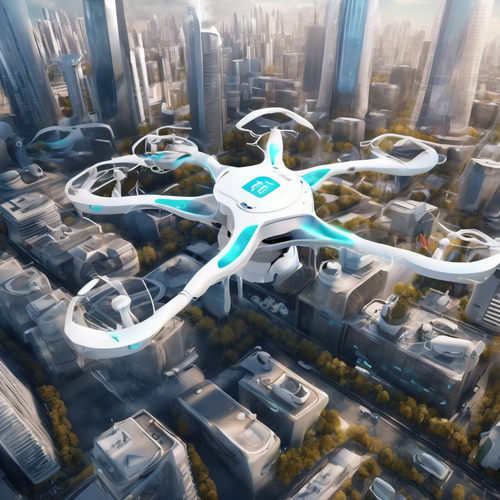From Brooms to Bots: The Evolution of Cleaning Norms and Regulations
Once upon a time, cleaning was an unregulated affair; think of it as a dance, where everyone followed their rhythm without much thought to the steps. Fast forward to today, and the world of cleaning has transformed into a meticulously choreographed ballet of regulations and norms, aimed at ensuring not just cleanliness, but also public health and environmental sustainability. 🌍 But what triggered this sweeping change? Was it the arrival of dirt-resistant fabrics, or perhaps the rise of global pandemics shrouded in uncertainty? Let’s embark on this captivating journey through the maze of cleaning standards, where irony and paradox meet to paint a vivid picture of our collective obsession with cleanliness.
From the Dust Bowl to Dust Busters
In the early days, cleaning was largely an unregulated territory, akin to the wild west. Households relied on an arsenal of primitive tools, from hay brooms to rags, and their cleaning methods were only as effective as the strength of the person wielding them. The notion of sanitation was as alien as a smartphone in the 19th century; after all, who needed standards when one could simply sweep stuff under the rug? 🧹
As urbanization took hold, cities became breeding grounds for unsanitary conditions. Think of it: a bustling city with populations growing faster than the weeds in your backyard. Health crises erupted with alarming frequency, spurring the need for regulation. Irony dripped from the reality that cleanliness, once seen as a personal virtue, was swiftly recognized as a public necessity. Indeed, the dust of antiquity slowly transformed into the spark of reform.
The Rise of Sanitation Codes
By the late 19th and early 20th centuries, governments began recognizing the need to intervene in the cleaning chaos. Cities unveiled cleaning codes with the same fervor as a painter reveals a fresh canvas. These early regulations addressed waste management, sanitation practices, and even toilet accessibility—and let’s be honest, the latter was a significant leap considering the widespread prevalence of outhouses! 🚽
Just as Matisse used bold strokes to create dynamic art, regulators painted a straightforward picture: cleanliness was now a matter of public health. The juxtaposition of personal responsibility versus communal duty took center stage. Fast-forward to the mid-20th century, and household cleaning began to reflect this growing consciousness. Brands sprang up offering pre-packaged solutions, and suddenly, cleaning was no longer the drudgery of yore but a competitive marketplace with promises of sparkling results. ✨
The Modern Era: Regulations Step Up
As the world found itself caught in the throes of industrialization’s side effects—air pollutants, toxic substances, and a grimy landscape—the standards surrounding cleaning morphed into robust regulatory frameworks. Enter organizations like OSHA (Occupational Safety and Health Administration) and the Environmental Protection Agency (EPA). With the flair of an orchestra conductor, they brought a rhythm to our cleaning practices, enforcing safety standards and environmental protections that were previously nonexistent. 🎶
Look at this striking transformation: what began as the simple act of cleaning one’s home evolved into a web of guidelines governing everything from the ingredients in cleaning products to the protocols for disinfecting public spaces. The irony here? Cleaning materials that once promised to “fight dirt” are now scrutinized as potential health hazards. As we strive for hygiene, we must also navigate a minefield of regulations focused on the very substances used to achieve it.
The Pandemic Catalyst
Enter 2020, and the world faced an invisible foe—the COVID-19 pandemic. Almost overnight, cleaning became a frontline defense against this new adversary. Cleaning norms dove headfirst into a renaissance, as robust disinfecting protocols became a lifeline. Suddenly, hand sanitizers and disinfectant sprays weren’t just optional but essential tools in our daily arsenal. It was both a revelation and a reminder that the cleanliness we take for granted has always been precarious. 🦠
The pandemic spotlight illuminated existing disparities in sanitation practices, leaving no stone unturned, which ironically included the very cleanliness of the stones we tread upon. Regulators sprinted to adapt, updating cleaning regulations to prioritize infection control and public health with unprecedented urgency. The landscape had transformed—cleaning had become a vital service, but one that came burdened with responsibilities and expectations unlike any before.
Looking Ahead: The Future of Cleaning Standards
So, what’s on the horizon for this evolving saga? With technology advancing at a pace faster than a cheetah on caffeine—consider innovations like robotic vacuums and eco-friendly cleaning products that make you feel like a superhero just for doing your chores—the future promises even more dramatic shifts. The juxtaposition of high-tech cleaning solutions against traditional methods creates a vivid contrast, highlighting the ongoing tug-of-war between convenience and sustainability. 🤖
More than ever, consumers are demanding transparency. Will cleaning materials be friendlier to the environment than your average garden gnome? Will we see cleaner and greener regulations that not only ensure public health but prioritize ecological integrity? The future holds tantalizing questions that beckon for answers.
“Cleaning norms are no longer just about scrubbing away dirt; they encapsulate our values, our priorities, and our responsibilities towards each other and the planet,” remarks Dr. Julia Baker, a leading expert in public health and sanitation.
As we glide into this new chapter, we find ourselves at a crossroads: do we cling to archaic ideas about cleanliness, or embrace a future where regulations reflect our collective aspirations? Cleaning won’t just be a practice; it will symbolize how we value health, community, and the world we inhabit. 🌱
